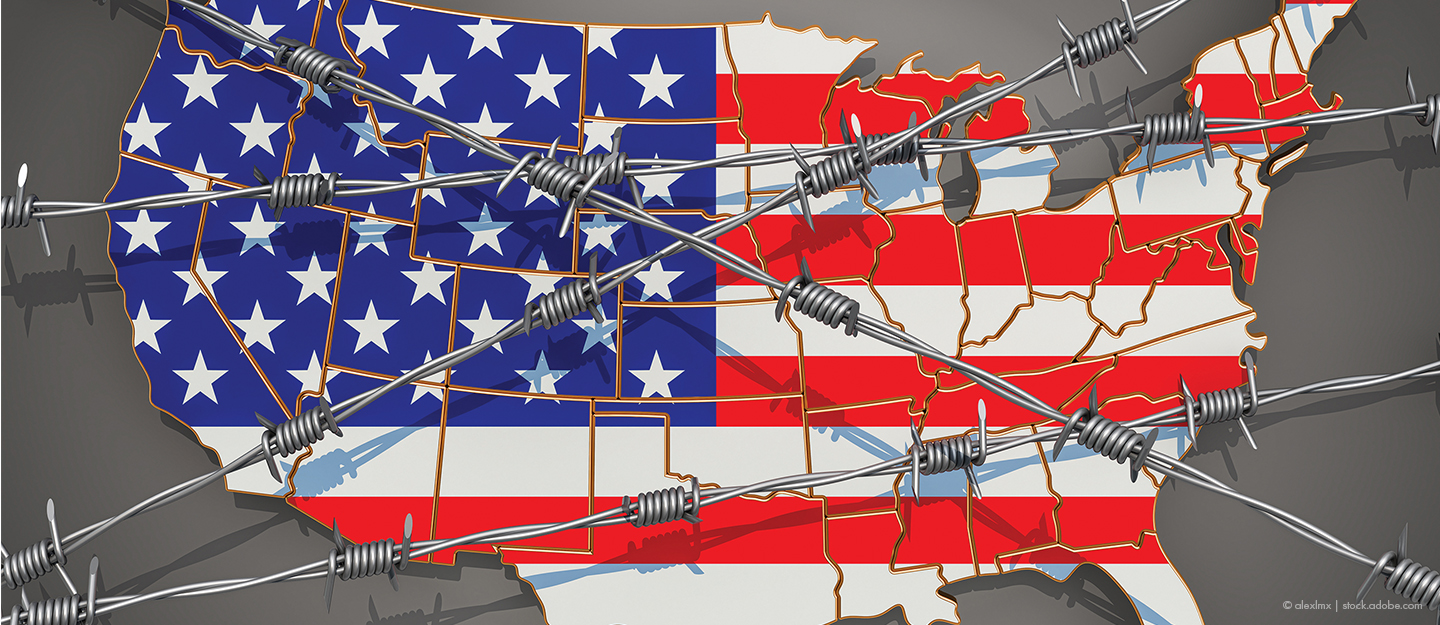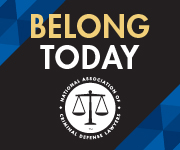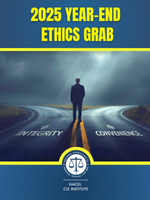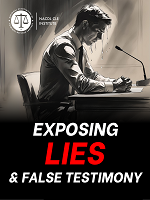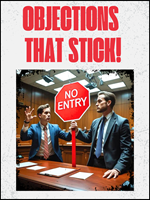Access to The Champion archive is one of many exclusive member benefits. It’s normally restricted to just NACDL members. However, this content, and others like it, is available to everyone in order to educate the public on why criminal justice reform is a necessity.
“You may say I’m a dreamer, but I’m not the only one.”
— John Lennon
Before the late 20th century — generally thought to be the rise of mass incarceration in this country{1} 1 Jennifer Gainsborough & Marc Mauer, Diminishing Returns: Crime and Incarceration in the 1990s (2000), https://www.prisonpolicy.org/scans/sp/DimRet.pdf. — we decided that the enforcement mechanism for the social contract was going to be violence. And it was going to be harsh. The roots of that decision can be traced to well before our colonization,{2} 2 Jennifer Marson, The History of Punishment: What Works for State Crime? 7(2) Hilltop Rev. (2015), https://scholarworks.wmich.edu/cgi/viewcontent.cgi?article=1127&context=hilltopreview. and the notion that justice requires violence became woven into our collective consciousness.{3} 3 Angela Yvonne Davis, Are Prisons Obsolete? (2003).
It has been said that fish do not know they swim in water. In the same way, living in a violent, racist society that embraces the oxymoron “retributive justice” has resulted in our passive acceptance of the inevitability of violent, harmful incarceration and the concomitant need to dehumanize those we incarcerate. We are all products of our environment, and those of us who call the United States home are likely oblivious to our national addiction to mass incarceration. If it is recognized at all, people tend to easily accept justifications for and normalize it. Unfortunately, this includes many criminal defense lawyers — including my former self.
It is difficult, but necessary, to zoom out of our own experience so that we might see the futility and the utter immorality of the current carceral system. It is futile because it increases, rather than decreases, antisocial behavior, and is a source of profound economic harm to society. The system is immoral because it requires our denial of the humanity of our brothers and sisters and engenders in us a willingness to do them harm. It did not have to be this way. We could have taken a completely different, infinitely kinder, and more peaceful approach. But it is not too late; the system can be understood, reimagined, and transformed into a force for good. And defense lawyers are the ones to do it.
As the group charged with protecting those accused of crime, criminal defense attorneys must fully appreciate the unmatched social holocaust of the American carceral system. This year, as NACDL and its allies rue 50 years of mass incarceration in this country, it is particularly apt that we bear witness to the human cost of the national addiction to incarceration and that we commit ourselves to ending it.{4} 4 The Sentencing Project, 50 Years and a Wake-Up: Ending the Mass Incarceration Crisis in America (2023), https://www.sentencingproject.org/advocacy/50-years-and-a-wake-up-ending-the-mass-incarceration-crisis-in-america/.
It is well known that the United States incarcerates far more people than any other country in the world. But it is worth noting that today, despite well-publicized reductions, the United States still imprisons approximately 650 people for every 100,000. Compare that to authoritarian nations: Russia incarcerates 328, Saudi Arabia comes in at 207, China imprisons about 120, and Syria about 60 of every 100,000.{5} 5 Emily Widra & Tia Herring, Prison Policy Initiative, States of Incarceration: The Global Context 2021 (2021), https://www.prisonpolicy.org/global/2021.html.
And lest we twist our minds into believing that locking away our fellow citizens is the price we must pay for freedom, note that The Netherlands imprisons 63 of every 100,000, and Norway a mere 49, and their crime rates are low. Think it is because they do not experience similar issues of ethnic diversity? Think again. Norway has a substantial immigrant population from diverse countries facing political and economic strife. They just have a more advanced system.{6} 6 David Nikel, Norway Stats: Facts & Figures - Life in Norway in 2021 (2021), https://www.lifeinnorway.net/norway-stats/.
One might then assume that these societies are too dissimilar. A look at Canada, our next-door neighbor, is telling. Canada imprisons a mere 104 per 100,000. Our British cousins are at 130, and France, only 93. In fact, American Samoa imprisons 42% more than Samoa.{7} 7 Emily Widra, supra note 5.
The United States, with only 5% of the world’s population, accounts for 25% of the world’s incarcerated. Our unique appetite for mass incarceration is, to be blunt, a global blight.{8} 8 Michelle Ye Hee Lee, Does the United States Really Have 5 Percent of the World’s Population and One Quarter of the World’s Prisoners? Wash. Post (Apr. 4, 2015), https://www.washingtonpost.com/news/fact-checker/wp/2015/04/30/does-the-united-states-really-have-five-percent-of-worlds-population-and-one-quarter-of-the-worlds-prisoners/.
How did we get here?
To begin with, America itself, along with its criminal legal system, was born of violence, colonialism, and slavery.{9} 9 Michelle Alexander, The New Jim Crow: Mass Incarceration in the Age of Colorblindness (2012). Our classist, racist, violent system was set up to do harm from the start.{10} 10 Bryan Stevenson, Why American Prisons Owe Their Cruelty to Slavery, N.Y. Times Magazine (2019), https://www.nytimes.com/interactive/2019/08/14/magazine/prison-industrial-complex-slavery-racism.html. But then, during the tough-on-crime era from the 1970s to the 1990s, policymakers decided to incarcerate individuals at globally unprecedented rates for political expediency and social control. It was a bipartisan sin. President Nixon’s “tough on crime” rhetoric laid the groundwork for Ronald Reagan’s doubling of the numbers of the incarcerated, followed by President Clinton’s ill-fated Crime Bill, which ignited the explosion of our prison populations.{11} 11 James Cullen, The History of Mass Incarceration (2018), https://brennancenter.org/our-work/analysis-opinion/history-mass-incarceration.
Compounding the tough-on-crime policies and resulting overcrowding were privatized, for-profit prisons, which led to more inmates and longer sentences. Why? Profit. Frequent and longer prison sentences have not abated. Despite significant reductions in imprisonment in 2020, largely the result of court delays, compassionate releases, excess COVID-related deaths and drops in the crime rate, the rate of imprisonment has now rebounded to almost pre-pandemic levels.{12} 12 Wendy Sawyer & Peter Wagner, Prison Policy Initiative, Mass Incarceration: The Whole Pie (2023), https://www.prisonpolicy.org/reports/pie2023.html.
Mass incarceration is bad.
Some people, including former Attorney General William Barr, Donald Trump, prosecutors, and law enforcement officials, argue that mass incarceration is not itself a bad thing.{13} 13 William P. Barr, Rising Crimes Are a Policy Choice, Wall St. J. (Oct. 26, 2022), https://www.wsj.com/articles/safe-streets-are-a-policy-choice-incapacitation-incarceration-state-federal-prison-violent-crime-1990s-reagan-bush-barr-obama-sentencing-bail-11666785403. It is. Virtually every societal ill is exacerbated, if not triggered, by mass incarceration. It is a public health hazard, promotes racism, increases the wealth gap, strains the economy, and increases crime and violence. It is unjustly meted out according to wealth and privilege, and often is most harshly used against the most vulnerable, including children, persons with mental illness, and those with developmental disabilities.{14} 14 Bruce Western & Becky Pettit, Incarceration and Social Inequality, Daedalus (2010), https://www.amacad.org/publication/incarceration-social-inequality.
Our bloated carceral system consumes one in every 15 general fund dollars.{15} 15 American Civil Liberties Union, Fiscal Cost of Mass Incarceration, https://www.aclu.org/issues/smart-justice/mass-incarceration/fiscal-cost-mass-incarceration (last visited May 21, 2023). But this is just a fraction of the true fiscal cost of imprisoning such a large segment of society. With each person lost to the prison system, communities are harmed by the loss of work, a smaller tax base, and the increase in numbers of those who will earn less and rely on social systems for survival. Economic development is curtailed in direct relation to increased incarceration.{16} 16 Prison Policy Initiative, Economics of Incarceration (Apr. 18, 2023), https://www.prisonpolicy.org/research/economics_of_incarceration/.
Also, mass incarceration is a massive public health problem. Each year of imprisonment takes two years off an individual’s life expectancy.{17} 17 Sam McCann, Health Care Behind Bars: Missed Appointments, No Standards, and High Costs (June 29, 2022), https://www.vera.org/news/health-care-behind-bars-missed-appointments-no-standards-and-high-costs. Even correctional officers have a life span of only 59 years — 16 years less than the national average.{18} 18 Dionne Hart, Health Risks of Practicing Correctional Medicine, 21(6) AMA J. Ethics E540-545 (July 2019), https://journalofethics.ama-assn.org/sites/journalofethics.ama-assn.org/files/2019-05/pnar3-1906_1.pdf.
Indulging a national addiction to incarceration perverts the entire justice system. It overburdens courts, eliminating the right to trial for all but a very few. The current criminal legal system forces untold numbers of innocent people to plead guilty, thereby concealing police and prosecutorial misconduct, which ultimately leads to increases in wrongful convictions. And it is important to remember that even today, despite much talk of bail reform, some 427,000 people are incarcerated, even though legally presumed innocent, just because they are too poor to buy their freedom.{19} 19 Wendy Sawyer, supra note 12.
With so much of the history of mass incarceration tangled up in the resistance to the emancipation of slaves, it is no surprise that imprisonment has been distributed unequally. It has consistently stunted the social and economic wellbeing of poor communities and communities of color.{20} 20 The Pew Charitable Trusts, Collateral Costs: Incarceration’s Effect on Economic Mobility (2010). The political power of these communities, disproportionately incarcerated, is systematically weakened by the vicious cycles created and maintained by mass incarceration.{21} 21 Robert D. Crutchfield & Gregory Weeks, The Effects of Mass Incarceration on Communities of Color, 32(1) Issues Sci. & Tech. (2015), https://issues.org/effects-mass-incarceration-communities-color/.
It is no coincidence that work in prison is compulsory. Individuals who refuse to work face discipline, including solitary confinement and increased sentences. Those who do work are paid obscenely low wages that are often paid back to the prison for things like commissary and toothpaste. Besides sounding eerily familiar, the practice of forced labor allows prisons to shift the costs of incarceration to the constructively enslaved incarcerated, thereby concealing the true cost of mass incarceration.{22} 22 American Civil Liberties Union & The University of Chicago Law School Global Human Rights Clinic, Captive Labor: Exploitation of Incarcerated Workers (2022), https://www.aclu.org/report/captive-labor-exploitation-incarcerated-workers.
U.S. prisons are among the most violent and deadly in the world.
We may be tempted to think that our prisons and jails are more humane than prisons in other parts of the world, but nothing could be further from the truth. Our penal institutions are among the most violent and deadly on the planet.{23} 23 From sources across the web including https://facts.net/worst-prisons-in-the-world/ and https://www.criminaljusticedegreehub.com/most-violent-prisons-in-the-world/. Moreover, the United States leads the world in the state-sanctioned torture of prisoners. The recent joint report by Yale Law School’s Arthur Liman Center and the Correctional Leaders Association concluded that, while the true number of prisoners in solitary confinement in the United States is unknown, at least 50,000 are currently held in solitary (more than 22 hours in isolation per day in an average 6’x 9’ cell).{24} 24 The Correctional Leaders’ Association & Arthur Liman Center for Public Interest Law, Time-in-Cell: A 2021 Snapshot of Restrictive Housing Based on a Nationwide Survey of U.S. Prison Systems (Aug. 2022), https://law.yale.edu/sites/default/files/area/center/liman/document/time_in_cell_2021.pdf. And 1,000 have been in solitary confinement in an area the size of a parking space for a decade or more.{25} 25 Nazgol Ghandnoosh & Ashley Nellis, How Many People Are Spending Over a Decade in Prison? (Sept. 28, 2022), https://www.sentencingproject.org/policy-brief/how-many-people-are-spending-over-a-decade-in-prison/. The use of solitary confinement is criminal, and we must call for its immediate end.
Decarceration will increase safety.
Although there is a movement toward abolition of our prison system, fears of evolution fuel resistance and false propaganda. Far-right claims abound that so-called progressive prosecutors and politicians working to merely reduce incarceration should be blamed for a perceived rise in crime. However, statistics show not only that crime rates are not up, but also that they are not correlated with incarceration rates, even among the somewhat diverse 50 states.{26} 26 Cameron Kimble & Ames Grawert, Between 2007 and 2017, 34 States Reduced Crime and Incarceration in Tandem (Aug. 6, 2019); Press Release, Federal Bureau of Investigation, Crime in the Nation Statistics (violent crime down by 1% over the previous year) (Oct. 2021); Rachel Eisenberg & Allie Preston, Progressive Prosecutors Are Not Tied to the Rise in Violent Crime (Oct. 26, 2022), https://www.americanprogress.org/article/progressive-prosecutors-are-not-tied-to-the-rise-in-violent-crime/.
The argument that the only way to stop crime is to lock away more criminals and throw away the key is based on fear, and countless studies and real-life examples show it is simply wrong.{27} 27 Bureau of Justice Statistics (May 2018); Charles Loeffler & Daniel Nagin, The Impact of Incarceration on Recidivism, 5 Annual Rev. Criminology 133-152 (2022). Mass incarceration does not decrease violent crime.{28} 28 Ibid. Instead, it exacerbates the causes of violent crime. The vast majority of those incarcerated will be released. By subjecting people to violence in jails and prisons, we are creating violent neighbors. And we are doing so in unprecedented numbers.{29} 29 Don Stemen, For the Record: The Prison Paradox: More Incarceration Will Not Make Us Safer, https://www.vera.org/publications/for-the-record-prison-paradox-incarceration-not-safer.
A pervasive belief exists that an increasingly large number of people are fundamentally bad, and they will do us harm if not deterred by harsh punishments. But this is simply the result of bias caused by exposure to decades of intentional false propaganda, as well as the paradox that the news generally reports singular, often shocking events rather than statistics. As a result, communities are made to fear one another and to believe — incorrectly — that locking people up even before a conviction is necessary to self-preservation. But releasing people prior to trial does not harm public safety. In fact, during the pandemic, when some jurisdictions released large numbers of pretrial detainees and others did not, rates of crime remained equal.{30} 30 Tia Herring, Prison Policy Initiative, Releasing People Pretrial Doesn’t Harm Public Safety (Nov. 17, 2020), https://www.prisonpolicy.org/blog/2020/11/17/pretrial-releases/.
A more recent widespread misconception is that the pandemic-era release of people from jails and prisons resulted in increased crime. This is also false. In fact, according to the Bureau of Prisons report last August, when the U.S. Department of Justice ordered the release of over 11,000 people from federal prison into home confinement under the Cares Act, only 17 — that is not a percentage, that is the actual number — committed new crimes. And of the 17, 10 were drug crimes and nearly all were nonviolent. This is a 0.15 percent recidivism rate over more than two years, as compared to the average 30 to 65 percent within three years of release.{31} 31 Molly Gill, COVID Policies Show How Many People in Prison Are No Danger to the Public, Wash. Post, Sept. 29, 2022, https://www.washingtonpost.com/opinions/2022/09/29/prison-release-covid-pandemic-incarceration/.
There is a better way.
In the 1990s, we inadvertently took part in a remarkable social experiment. In both Norway and the United States, recidivism rates were high — about 70-75%. However, unlike the United States, which responded with those tough-on-crime policies, Norway took a hard left. Norway instituted a reimagined system designed to emphasize healing, normalcy, and rehabilitation, with the singular goal of creating better neighbors. Unlike in the United States, where policies of mass incarceration resulted in increased recidivism and violence, Norway’s recidivism rate dropped to 25%.{32} 32 First Step Alliance, What We Can Learn from Norway’s Prison System: Rehabilitation and Recidivism (Jan. 3, 2022), https://www.firststepalliance.org/post/norway-prison-system-lessons.
Moral judgment of the accused and the dehumanization of prisoners have allowed us to disregard and discount the harm the legal system exacts upon everyone. It is a kind of national original sin, and we can no longer ignore the dystopic results of that evil.
Dismantling mass incarceration will require a paradigm shift, but it has begun. Perhaps as the nation watched from its COVID quarantine that knee on George Floyd’s neck, we may have begun an abiding reckoning for the abuse of our criminal legal system as a tool for racist oppression, creating a unique opportunity to reimagine that system.{33} 33 E. Carson, M. Nadel & G. Gaes, Bureau of Justice Statistics, Impact of COVID-19 on State and Federal Prisons, March 2020 - February 2021 (August 2022), https://bjs.ojp.gov/library/publications/impact-covid-19-state-and-federal-prisons-march-2020-february-2021. From across the political spectrum, such unlikely bedfellows as the American Conservative Union Foundation (which hosts CPAC) and the Anti-Recidivism Coalition (ARC), as well as leading economists, humanitarians, and social scientists, have called for reform.
In this issue of The Champion dedicated to decarceration — the fight against mass incarceration and harmful conditions of confinement — members of the Decarceration Committee will share some of the ideas we have explored in coordination with those at the leading edge of reform. These pieces awaken us to the shameful anomaly of our system and inspire us to fix it. We hope they inspire every criminal defense lawyer to join NACDL’s commitment to end the long national nightmare of mass incarceration in this country. It is, after all, on our watch.
Jacqueline Goodman is chair of the NACDL Decarceration Committee.
© 2023, National Association of Criminal Defense Lawyers. All rights reserved.

